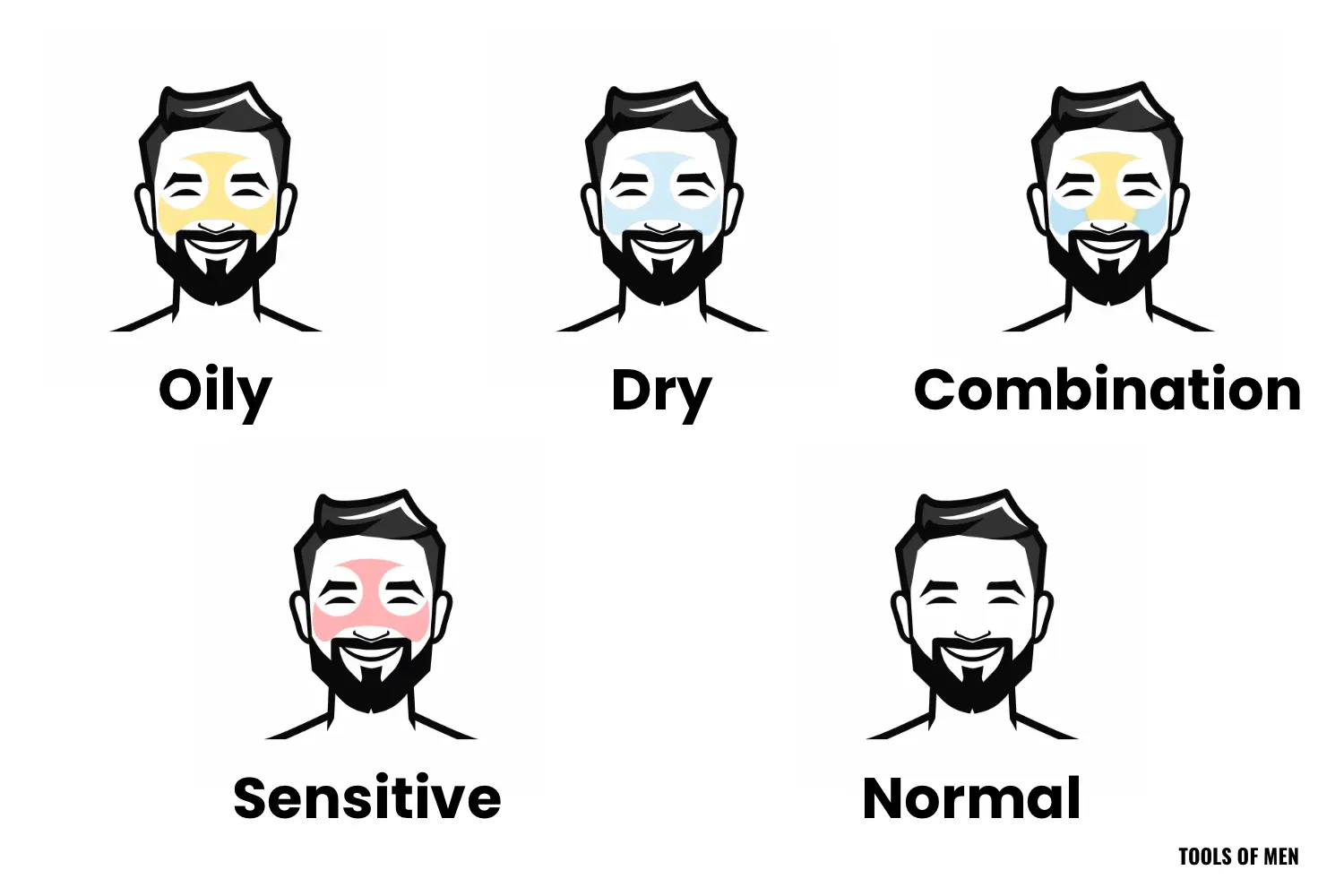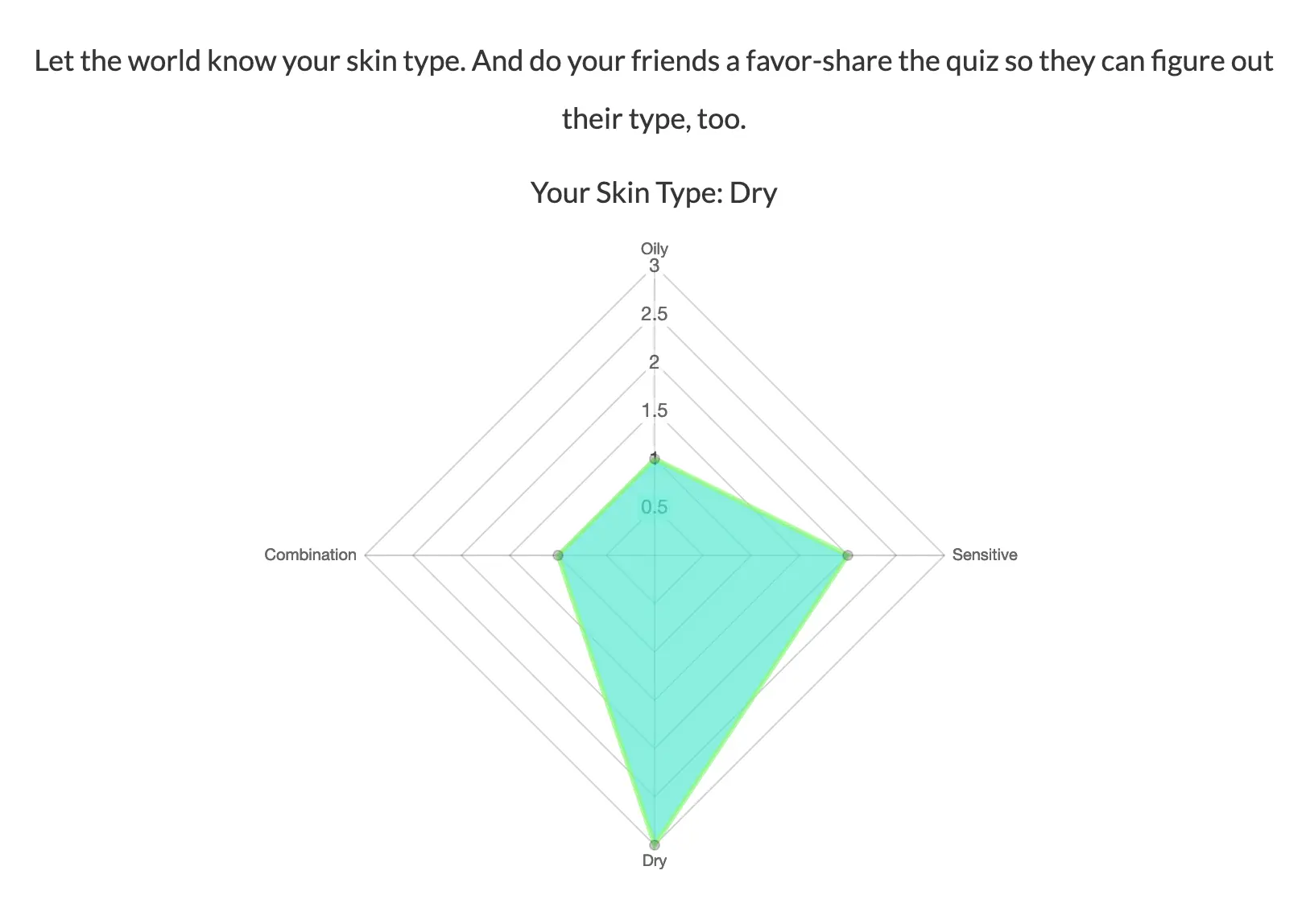To adopt an effective skincare routine, it starts with the fundamental step of identifying your skin type. When you correctly know what skin type you are, product selection and the effectiveness of your routine become considerably optimized.
Think of it like plant maintenance – you wouldn’t water a cactus as often as you would a fern. They both require different care, and similarly, different skin types need varying levels of care and different products.
6 Ways to Identify Your Skin Type
From at-home methods to the help of a professional, here are six ways to identify your skin type.
1. Wash Your Face, Wait, & Review the Results (aka Bare-Faced Method)
If the next thirty minutes are free on your calendar today, then you can follow these steps to quickly determine your skin type.
- In a well-lit room, take a selfie to document the current state of your skin before washing. If you aren’t comfortable with a selfie, that’s fine. You can closely examine your face in the mirror and note the texture or shine of your skin – pay close attention to the area of your T-zone (the forehead, nose, and chin).
- Next, wash your face thoroughly with a cleanser. If you don’t already have one, that’s okay. Use someone else’s (partner, family member, friend, etc.) If this isn’t possible, then use a mild bar soap or simply water and rinse away any dirt, oil, and other impurities.
- Gently dry your face with a clean towel. It is crucial to pat your face dry rather than rubbing it to avoid causing any irritation or redness.
- Wait 30 minutes.
- Look at your skin closely or compare the current state to the earlier note you had made or selfie you had previously taken. See if there is any noticeable shine on your T-zone or other parts of your face. Also, see if any areas feel tight, flaky, or uncomfortable in any way.
Based on these observations, here are some general classifications for skin types:
- Dry Skin: Men who feel tightness, exhibit flaky areas, or see dullness or rough patches across their skin, especially on cheeks and around the eyes, may have dry skin.
- Oily Skin: If, after 30 minutes, your face has some noticeable shine to it, you likely have oily skin.
- Combination Skin: This one is tough to diagnose; however, those with combination skin typically have an oily T-zone but dry or normal skin on other parts of their face like the cheeks or jawline.
- Normal Skin: If your skin doesn’t feel tight or oily and appears clear and not sensitive, you most likely have normal skin.
- Sensitive: If you notice any redness or irritation, then your skin is considered sensitive. This is likely the result of either the friction from washing or the ingredients used in the soap or cleanser, which have caused an adverse reaction.
Here’s an illustration that demonstrates the different skin types:

2. Blotting Sheets for Oily Skin
Specially made blotting sheets, which are thin, translucent paper-like materials, will lift oil and sweat off your skin – clearly demonstrating the areas of concern. However, their limitation is that they cannot identify dry, sensitive, or normal skin types effectively.
These are widely available online, like these ones here on Amazon, or at a local department or beauty store.
3. Ask a Friend
If you are uncertain yourself, asking a trusted friend or family member for a second opinion can be helpful. Make sure it’s someone who sees you frequently and is comfortable giving their honest opinion.
4. Online Skin Type Quizzes & AI Tools

In the digital age, several brands have developed interactive “skin quizzes”. These quizzes contain questions about your skin habits, textures, sensitivities, and more to help identify your skin type.
Here are a couple of online tools that may be useful:
- Ask the Scientists (diagram above is from this site)
- Prokerlala
- Dermalogica (this requires a photo upload)
However, instead of just relying on one single quiz, take a few and average the results. You’d be surprised how varying the results can be due to the differences in algorithms and criteria used by different brands.
5. Visit a Beauty Store
Whether you have a Sephora, Ulta Beauty, Kiehl’s, or local beauty boutique, taking a trip to the store is a great way to quickly get trusted advice. The experts on hand at the store see various skin types each day and have a good understanding of how different skin looks, feels, and behaves under various conditions.
Of course, many folks there are in the business to upsell you on products and treatments, but a wise approach would be to remain firm that you are there to identify your skin type first—any product recommendations can follow afterward.
Just be honest, ask them what they think your skin type might be, and ask for some tips on how to care for your particular skin type.
6. Physician or Dermatologist
Whether you have your annual exam booked or you want to specifically address your skin concerns, discussing it with a physician or a dermatologist is the most reliable method. While this may not be necessarily practical if you want to get it done today, it is the most tailored and failsafe method of identifying your skin type.
A dermatologist can conduct detailed skin examinations and tests to accurately determine your skin type and any conditions that you may be prone to. These doctors are better experts than you’ll find by answering any online quiz or at a beauty store counter and can also consider other individual factors.
For instance, they can assess the impact of any medication you are taking, examine how your lifestyle or geographical location might affect your skin, and take into account any hereditary skin conditions that may influence your skin type.
In the event that you don’t currently have a dermatologist, platforms like Zocdoc are great tools to help you locate and schedule an appointment with a local dermatologist quickly and conveniently.